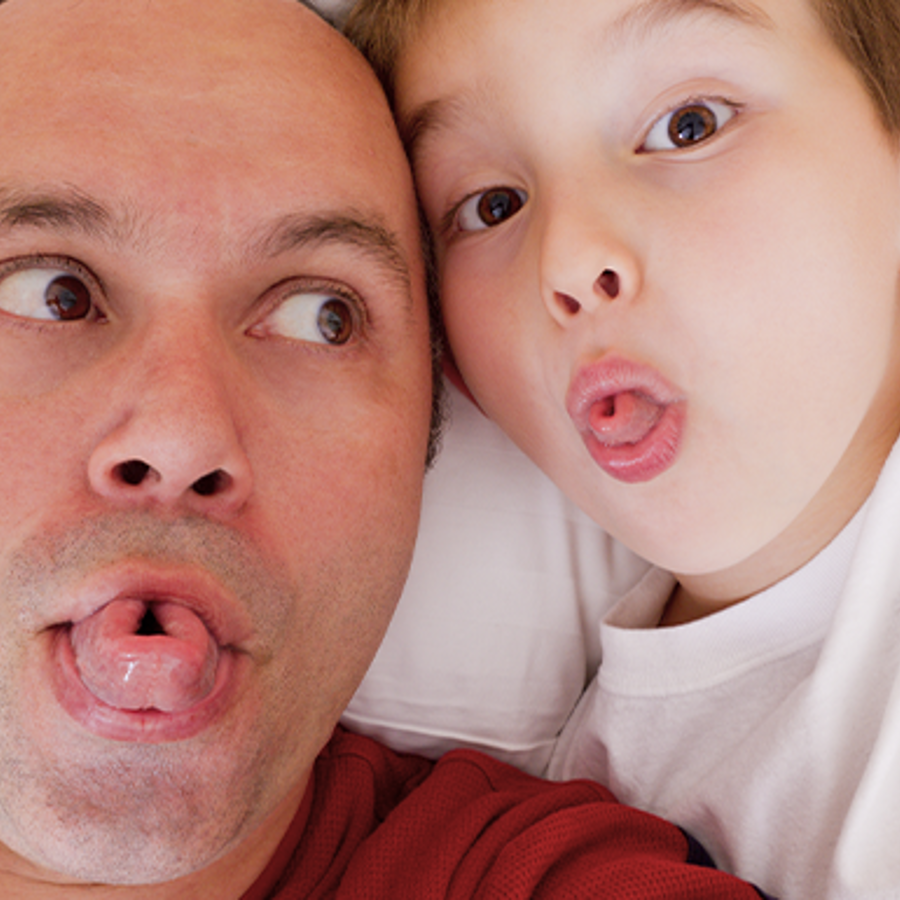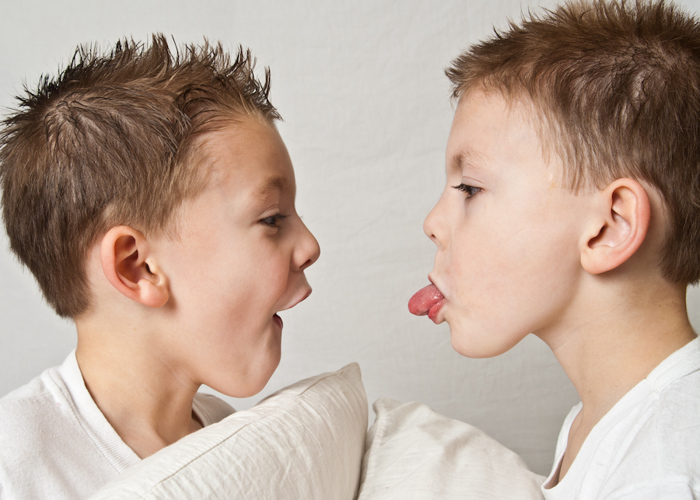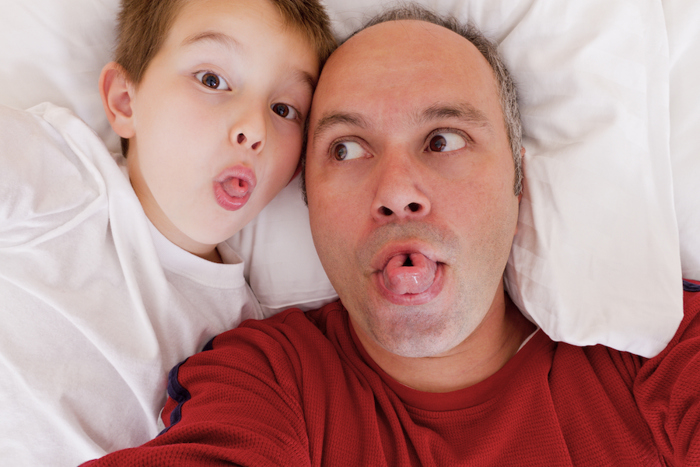
Is it possible for two parents who cannot roll their tongues to have a tongue-roller child?
June 10, 2005

- Related Topics:
- Genetic myths,
- Complex traits,
- Environmental influence
Someone from the United Kingdom asks:
"Is it possible for two parents who cannot roll their tongues to have a tongue-roller child?"
Yes, two parents who can't roll their tongues can have a child who can. And it may be more common than we think.
Many of our teachers used tongue rolling as a simple example to teach the idea of dominant and recessive genes. The lesson probably went something like this:
"Most of our genes come in pairs — one from mom and one from dad. Our genes also come in different versions called alleles. The tongue-rolling gene comes in two forms, one that lets you roll your tongue and another that doesn't.
If you have a version of the tongue-rolling gene that lets you roll your tongue and a version that doesn't, then you can roll your tongue. The tongue-rolling version is dominant over the one that doesn't let you roll your tongue. This is what dominant means — one of the versions trumps the other."
Well, it's not quite that simple. There are many examples of parents who can't roll their tongues having tongue-rolling children. And the little bit of hard research that has been done on the topic clearly shows that tongue rolling is not a simple dominant trait.
Research done in 1950's and the 1970's showed that identical twins don't always share the ability to roll their tongues. In fact, in the later study, the researchers showed that identical twins were no more likely to share tongue rolling than fraternal twins.
The reason this is such strong evidence is that identical twins share the same DNA. If tongue rolling were really as simple as we were always taught, then identical twins should always share their ability to roll their tongues. But they don't.
So what's going on here? This is actually not that uncommon in genetics — it even has an unnecessarily complex name, variable penetrance.

Environmental influence?
There are a number of reasons you can have a gene but not see any sign of it. One possibility is that the effects of the gene can't be seen without some sort of trigger from the environment.
An example of this is juvenile diabetes. There are genes that make people more likely to get this form of diabetes. But to actually get juvenile diabetes, something else needs to happen. That something is sometimes a viral infection.
The idea is that if you have the juvenile diabetes gene(s), then the part of your pancreas that makes insulin looks a bit like a certain virus. When the virus infects you, your body mounts an attack on the virus, destroying it. Unfortunately, in a "friendly fire" incident, part of your pancreas is also destroyed and you get juvenile diabetes.
Someone never infected with the virus but who has the gene(s) for juvenile diabetes will not get this form of diabetes. But they can pass the gene(s) onto their kids. And if the child gets infected with the virus? Then he or she can develop diabetes.
Perhaps tongue rolling also needs some sort of environmental trigger (although it probably isn't virally related).
Multiple genes?
Another way to have a gene but not have the trait is if that gene isn't enough. In other words, you need two or more different genes to see a trait and you only have one.
An example of this is eye color (another genetic trait often oversimplified in schools). At its most basic, there are two eye color genes, a brown-blue one called BEY2 and a green-blue one called GEY.
To get blue eyes, both of your BEY2 and both of your GEY genes need to be the blue kind. For example, if both your BEY2 are blue but one of your GEY is green, then you have green eyes. So to get blue eyes, both genes need to be "right."
And even this is an oversimplification! Probably there are more than two genes involved. But even at its simplest, eye color is an example of multiple genes working together.
Imagine that to be able to roll your tongue you need two genes, A and B. For each of these genes, there is a certain dominant version that lets you roll your tongue. And you need dominant versions of both genes to have the trait.
Now let's say that one parent has a dominant A and the other parent has a dominant B. Neither can roll their tongues. What would happen if one parent passed on a dominant A and the other a dominant B to their child? A child that could roll their tongue. Parents who cannot roll their tongue would have a tongue roller for a child.

Another example is something called a modifier gene. A modifier gene can turn another gene on or off.
To understand a modifier gene, we need to remember that for a gene to have an effect it must be "on." On means that the instructions in the gene have been made into a protein that can do something useful.
It is also important to remember that genes are really just instructions for making proteins — they don't do anything on their own. The tongue-roller gene has to make a protein that allows the muscles of the tongue to bend in a certain way.
Now imagine another gene that keeps the tongue-rolling protein from being made (let's call it M). M could eliminate the tongue rolling protein in lots of different ways. For example, M could prevent the cell from reading the instructions in the tongue-rolling gene or destroy the tongue-rolling protein outright.
So what happens if you have the tongue-rolling gene and this modifier gene M? You can't roll your tongue because M has gotten rid of the tongue rolling protein.
Now, let's say two of these people have kids and they pass on the tongue rolling gene but not M. Will these kids be able to roll their tongues? Yes. Parents who cannot roll their tongue would have a tongue-rolling child.
As you can see, there are potentially lots of ways for nonrollers to have roller children. Even "simple" traits like tongue rolling can get pretty complicated pretty quickly.

Author: Dr. D. Barry Starr
Barry served as The Tech Geneticist from 2002-2018. He founded Ask-a-Geneticist, answered thousands of questions submitted by people from all around the world, and oversaw and edited all articles published during his tenure. AAG is part of the Stanford at The Tech program, which brings Stanford scientists to The Tech to answer questions for this site, as well as to run science activities with visitors at The Tech Interactive in downtown San Jose.
 Skip Navigation
Skip Navigation
